Maxwell for SU VS Twilight
-
Here's a couple of renders at 800 pixels wide using your scene as-is (geometry-wise) but with a few materials edited and the physical sky turned off(see attached sketchup file).
The free version of the plugin only has the "draft" engine which is not well suited to complex lighting -- the $99 version comes with the prodcution engine which is better suited to such tasks.

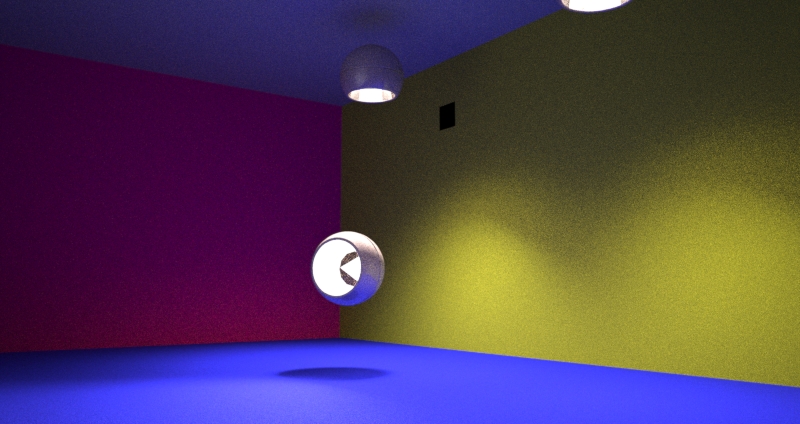
I can get better results by editing the geometry which I will do next.
Best,
Jason. -
Here's the a version with edited geometry (see attached SketchUp file) at 10 min with the production engine ($99 version of the plugin)
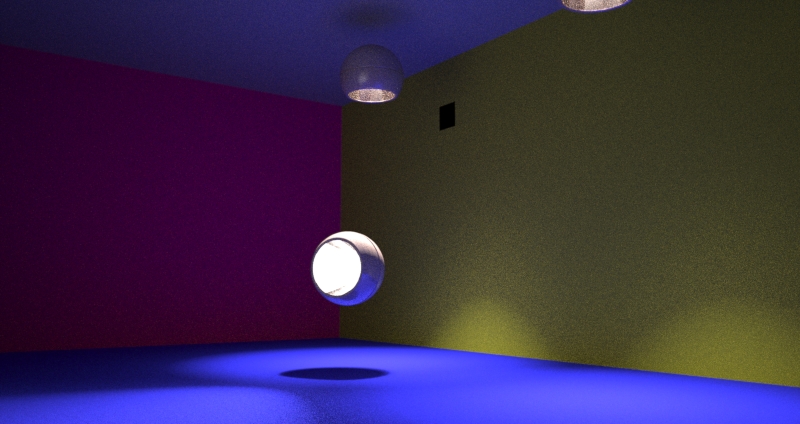
Here's the results of the same scene using the full Maxwell Render Suite ($696.50) at 10 minutes and with Color Multilight enabled which allows me to not only adjust the intensity of the light but also the color as well.
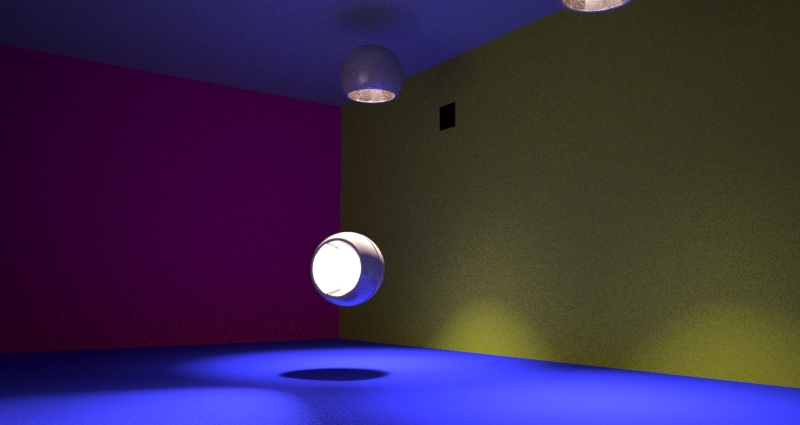

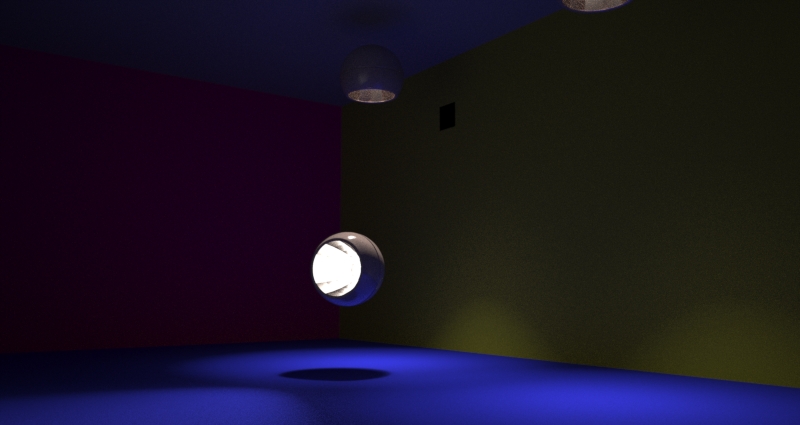
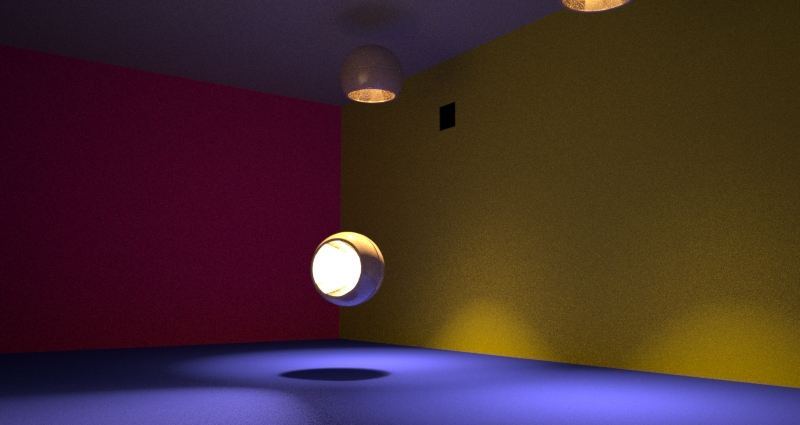
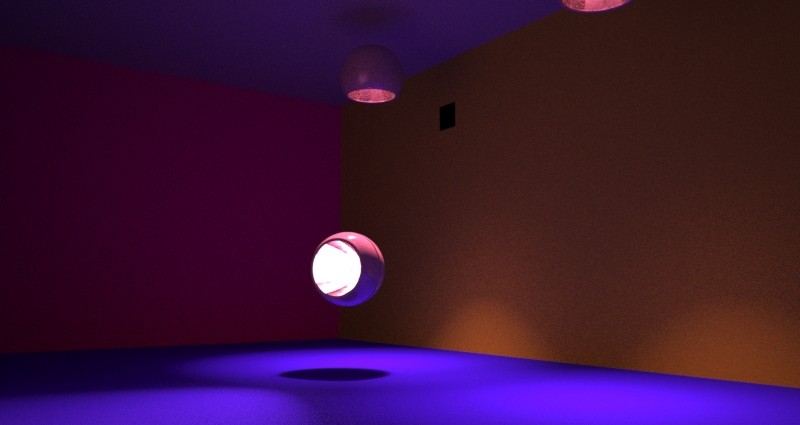
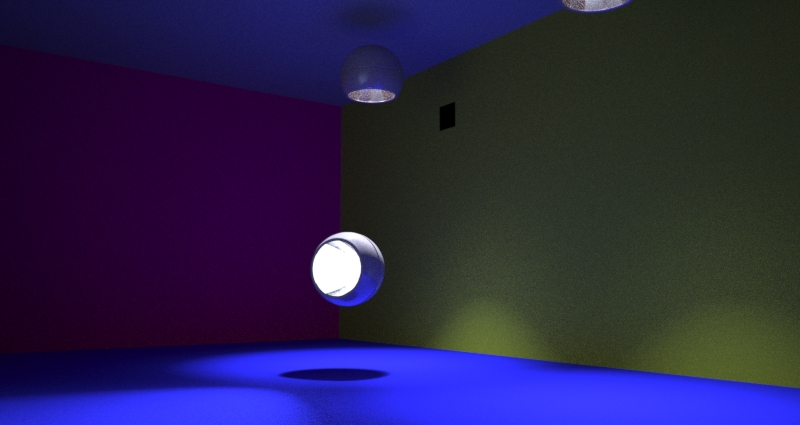

Best,
Jason. -
I suppose I should say as a point of reference I am using a Intel i7 920 processor (@2.67 GHz) -- which is hardly the latest/speediest hardware available... so anybody who has a better processor/ more cores should be able to get much better/faster results.
Best,
Jason. -
Here's why you would not want to use physical sky in an interior scene.
Both of these are rendered to the same 10 minutes, but one is a hole which reveals the physical sky lighting and the other is a simple emitter plane in the same spot:
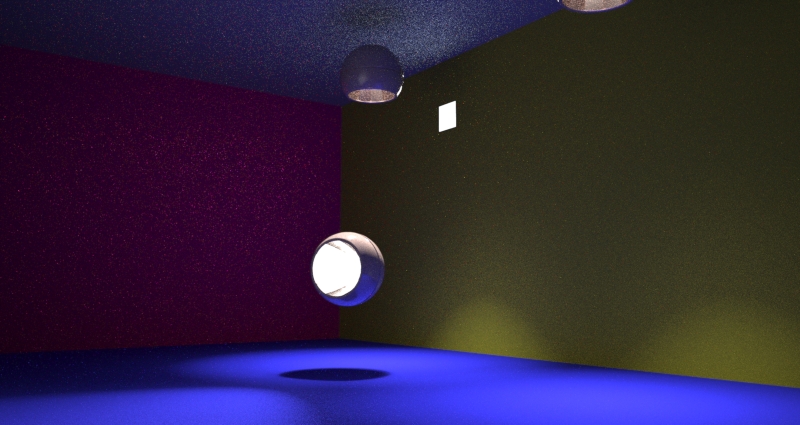
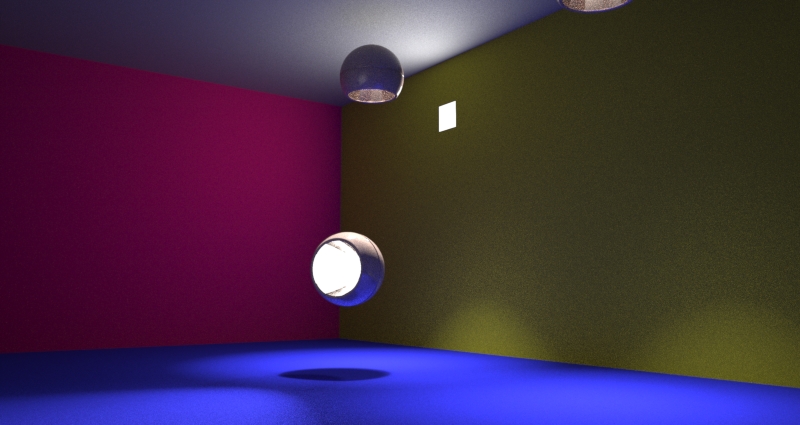
As you can see both will render white because of the exposure needed for the interior setting for this render so from a practical POV it is faster to simply use an emitter plane or a HDR emitter plane for that "hole" rather than making Maxwell slog through all the extra calculations for such a tiny opening.
If there was stuff going on outside that could be seen through the windows I'd say OK, but even then IBL is a better choice than Physical Sky -- which in my opinion is best used if it is the only lighting in the scene (otherwise I prefer IBL environment or HDR emitter planes).
Best,
Jason. -


I'm guessing he put that hole in the wall for that exact reason to stress out an unbiased engine.... almost cruel.
-
@solo said:
:mrgreen:

I'm guessing he put that hole in the wall for that exact reason to stress out an unbiased engine.... almost cruel.
Maybe he did at that -- pretty sadistic indeed

Best,
Jason. -
@jason_maranto said:
@solo said:
:mrgreen:

I'm guessing he put that hole in the wall for that exact reason to stress out an unbiased engine.... almost cruel.
Maybe he did at that -- pretty sadistic indeed

Best,
Jason.not for sure mate, solo is right. also I was using the free version, and am not on testing a "real model" as if Maxwell is modeled to mimic the real world , so it most be also capable for a bit larger or smaller objects "that are possible in real world".
twilight and v-ray also were good on this scene... no something special, but just a simple scene.......
I was not aware of "roughness on emitter materials and was thinking completely at the other side!!! (imagined that it must be like a light bulb, and so, must be glossy...., as real world ). also about the lights... I've modeled it based on one of maxwell manual scenes.
). also about the lights... I've modeled it based on one of maxwell manual scenes.
at the other hand , Thea also supports more light types... that are really handy while I am not familliar with maxwell lights ( I just have experienced Mx r1.7) -
To be clear my point is that Maxwell is optimized to render scenes with realistic proportions and details in the geometry, the higher-poly the better...
A test like this proves very little because nobody who is using Maxwell as it is intended to be used is actually going to ever need a scene like this.
Basically all you are saying to me with this test scene is "Maxwell sucks at the pure CG look" -- which I already know, it's not meant for that.
The question of speed is somewhat redundant because of course any biased engine is going to outperform unbiased engines in speed as a rule... and fully unbiased engines should generally vary in render time very little assuming they are using the same hardware resources and using similar features.
And finally it has been said in just about every way conceivable that the draft engine (which is all that is available in the free plugin) is not suitable for complex lighting... it can be used but do not expect great results fast using more than 1 - 2 lightsources.
The free plugin will do a very nice job on exterior arch-viz shots and IBL lit advertising-type product shots, but arch-viz interiors (with emitters) will be somewhat of a stretch using the free plugin.
But at the end of all this, to be completely fair, if you are going to compare the interior results from other engines you need to use the production engine -- at $95 it is still cheaper than Twilight... and this way you would be comparing apples to apples.
Best,
Jason. -
a bit off topic,
let me ask , wich is the best setting to prepare a light model using maxwell, and does it offers ,point , or spot light or we must model them?
also I like the simple interface of su plugin while it has almost everything needed.
twilight is really handy but it's interface is not still friendly (maybe we must be patient for next version that seems has some interesting new features (like toon shader ).
).
as I mentioned befor, fry is a nice render engine and also so powerful that hasn't been such popular as i.e. v-ray.... -
Right now the options are to use an emitter material or an HDR emitter material.
The emitter material allows you to set the light power parameters the same as a real light fixture -- so you would want to apply the material to the same surface area as a real light to achieve the most realistic results. Keep the material roughness at 100% unless you are planning on showing it as turned "off" in another render and need the "glass" look.
The HDR emitters are bit more flexible IMO and I would tend to use them for any complex light effects (computer monitors, TV's, fireplace, etc.) -- basically any 32-bit image will do.
Coming soon are IES lights which are already supported by the engine but are not available as an embedded type in the current stand-alone plugin release... this would be the best choice for light fixtures, especially if the light source will not be seen "on camera".
Point or spot lights do not exist in Maxwell because they are considered Biased approaches to lighting -- so IES would be the alternative, which is why I am excited to see they are coming.
I've been helping alot of new users lately and the most common issue I am seeing is the geometry they are using is not Maxwell-ready... Maxwell really will only give as good of results as the geometry you feed to it. Generally any shortcuts taken in the modeling will yield poorer results with Maxwell -- it wants the model to be as the real thing. Emitters are not excluded from this -- for instance if you want to do a flame you can use a regular emitter material but you would need to model the flame to scale with details (probably with artisan or similar).
At one point in time I was better versed in the various rendering packages, and I really enjoyed comparing (which is why I try to read whenever something is posted about other engines and participate in the "render this" threads when I can) -- but these days I have my hands full trying to stay on top of all the software packages I already use, so I'm not personally testing other engines.
There are a number of really tremendous unbiased engines -- I'm not so crazy about the biased engines in general, but with good post processing skills almost any engine can produce usable to excellent results these days.
Best,
Jason. -
Jason,
I'm curious, I don't know if you've posted about this elsewhere, what do you see as the major disadvantage of biased renders? Kinda leading I know, but you keep putting down biased renders, so I'd be interested to hear why. If you've already written extensively about it, can you point me there.
Andy
-
Nope I tend to avoid the subject since I'm far from an expert -- I already have 2 biased renderers myself, but I prefer Maxwell by far and use it almost exclusively when I have a choice.
It's really as simple as the quality of light for me -- I just think unbiased renders generally look better (more realistic) out of the box... but the thing that aggravates me about the biased approach in general is the arcane terminology that is used so often for many parameters (this is present in some unbiased engines as well). Probably the thing that appealed to me most about Maxwell was the simplicity and relate-ability of the parameters and the quality of light.
It's really the same thing that appealed to me about SketchUp -- I'm not a big fan of the typical "CG speak"...
Best,
Jason. -
Thanks Jason. I suppose I'll just have to see for myself when I have a chance to play with it and compare some scenes. This has been a helpful thread to get a general idea of where the strengths are of Maxwell.
-
off topic but maybe interesting: motiva colimo+ Thea render is almost a miracle, has anyone tested it? (Thea as a hybrid engine and motiva as a time saver!!)
I also like the relight system of Thea:
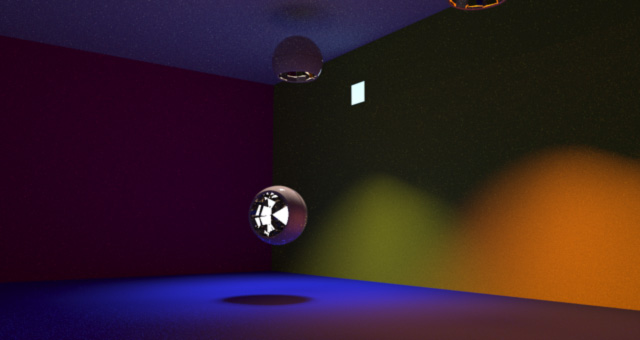
fymoro models are good for almost every render engine (maybe not good for hypershot that has a weak interior render result)
-
@majid said:
off topic but maybe interesting: motiva colimo+ Thea render is almost a miracle, has anyone tested it? (Thea as a hybrid engine and motiva as a time saver!!)
I also like the relight system of Thea:[attachment=0:ofhpbqth]<!-- ia0 -->1-relight.jpg<!-- ia0 -->[/attachment:ofhpbqth]
fymoro models are good for almost every render engine (maybe not good for hypershot that has a weak interior render result)
I'm curious about this. I couldn't find a page to download a demo from motiva colimo but I'd like to try it out.
Maybe you could post some more thoughts, insights about it's usefulness?Edit: I just found the demo download link.
-
I tried again the free maxwell plugin version, still too noisy for interior. I got a reasonable result out of twilight with biased 0unbiased settings...on my old crappy machine
-
@majid said:
I tried again the free maxwell plugin version, still too noisy for interior. I got a reasonable result out of twilight with biased 0unbiased settings...on my old crappy machine
Hardly surprising since I just spent pages of posts telling you that it will not work -- and why, and what the solution is (pay the $95).
-
-
@jason_maranto said:
@majid said:
I tried again the free maxwell plugin version, still too noisy for interior. I got a reasonable result out of twilight with biased , unbiased settings...on my old crappy machine
Hardly surprising since I just spent pages of posts telling you that it will not work -- and why, and what the solution is (pay the $95).
I see I see, I am comparing both demo versions of maxwell and twilight(IMO twilight has a good demo, fully functioning, biased + unbiased engine, more light options..., with a watermark and size limitation, while maxwell has no watermark, but not good quality, etc...)99$- 95$
-
There is no watermark because it is not a demo -- there is no demo for Maxwell except for the full Maxwell Render Suite. It is a fully functioning render engine unlimited in both time of use and of watermark and very capable of producing excellent (and relatively fast) results for what it designed to do... all for free.
However it was not made to do what you are trying to do. which is stated clearly on their webpage and I have said over and over again on these forums -- but the good news in not everybody needs to do what you are trying to do... for those users it may be a perfectly usable piece of free software.
I get the sense you are trying to prove a point, but what you seem to fail to grasp is that it is not a comparable software -- it was never designed to be. The Twilight demo (and all other demos) are demoing the full software -- this is only a small subset of Maxwells capabilities.
The $95 version of the Stand-alone plugin is more comparable in quality for the types of renders you want to produce, but it too is simply a subset of the full Maxwell Render Suite.
If you cannot understand it's designed function then you cannot prove it fails -- your conception of what it should do is totally flawed. I've proved elsewhere on these forums that the free version of the stand-alone plugin can render exterior (daylight or IBL envirnments) shots with extremely large and detailed geometry to a very high quality level very rapidly (see below for an example).

Best,
Jason.
Advertisement








